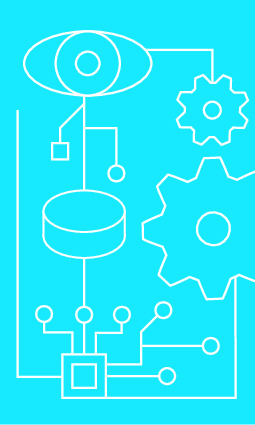|
|
|
| Module code: MST.AEL |
|
|
2V+3P (5 hours per week, accumulated) |
|
6 |
| Semester: 4 |
| Duration: 2 semester |
| Mandatory course: yes |
Language of instruction:
German |
Assessment:
[still undocumented]
|
MST.AEL (P231-0020, P231-0021) Mechatronics and Sensor Technology, Bachelor, ASPO 01.10.2012
, semester 4, mandatory course
MST.AEL (P231-0020, P231-0021) Mechatronics and Sensor Technology, Bachelor, ASPO 01.10.2011
, semester 4, mandatory course
|
75 class hours (= 56.25 clock hours) over a 15-week period.
The total student study time is 180 hours (equivalent to 6 ECTS credits).
There are therefore 123.75 hours available for class preparation and follow-up work and exam preparation.
|
Recommended prerequisites (modules):
MST.ELE Electronics
[updated 10.04.2011]
|
Recommended as prerequisite for:
|
Module coordinator:
Prof. Dr. Dieter Hornung |
Lecturer: Prof. Dr. Dieter Hornung
[updated 01.10.2005]
|
Learning outcomes:
After successfully completing thismodule, students will be able to develop sensor evaluation circuits, signal interfaces and actuator control circuits until they are ready for series production.
They will be familiar with the process steps from a circuit diagram to a printed circuit board and will be able to carry them out independently.
They will be able to simulate electronic and sensor functional assemblies and build them independently.
[updated 10.05.2021]
|
Module content:
The procedure for circuit design will be explained based on selected examples of sensor evaluation circuits etc. Required special components will be discussed if necessary. A special focus will be put on the guidelines for the awarding of the CE mark and its specific application to circuit design and product design.
The manufacturability and the related costs of possible solutions will be analyzed in the form of case studies.
PCB development with the help of and based on the EDA program ARIADNE
Circuit diagram module, database module, layout module, CAM module (GC-Prevue)
Circuit simulation with the help of and based on the program WinSpice
Introduction, program operation, circuit description (structure of a Spice file, components, model instructions, subcircuits), control instructions, types of analysis, types of output, simulating application circuits
[updated 10.05.2021]
|
Recommended or required reading:
Lecture notes, application instructions from semiconductor manufacturers, data sheets
Ulrich Tietze / Christoph Schenk: Halbleiterschaltungstechnik, Berlin, Springer Verlag
Jacob Millman / Arvin Grabel: Microelectronics, New York, McGraw – Hill Book Company
Trainingshandbuch “ARIADNE” und Demosoftware “ARIADNE” Version 8.5, Ulm, Fa. CADUL
E.E.E. Hoefer / H. Nielinger: SPICE , Berlin, Springer – Verlag
Mike Smith: WinSpice3 User’s Manual
[updated 10.05.2021]
|


